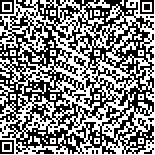|
|
|
| |
|
|
| 本文已被:浏览 1674次 下载 1468次 |

码上扫一扫! |
|
|
| 中国对虾对日本刺沙蚕的摄食率研究 |
|
王诗红1,2, 张志南1,2
|
|
1.青岛海洋大学海洋生命学院 青岛;266003
|
|
| 摘要: |
| 于1996年6月在山东省莱阳市养殖场采集中国对虾(体长4.5-6.0 cm,体重1.2-3.7 g)和日本刺沙蚕(体长1.0-5.0 cm),通过持续20d的室内实验,研究中国对虾对日本刺按蚕的摄食率。实验条件为:水温21-23°C,海水盐度30-31,pH=8.2-8.6室内自然光照。实验结果表明,中国对虾对日本刺沙蚕的摄食率C(g*g-1*d-1)与体重W(g)的关系为C=0.153W0.7072。在实验条件下,中国对虾生长状况良好,平均日生长率为432%。中国对虾摄食日本刺沙蚕的物质转换效率为12.721%±2.792%,能量转换效率为9.362%±2.472%中国对虾摄食丰与投饵量之间呈明显的对数关系。 |
| 关键词: 日本刺沙蚕 中国对虾 摄食 生态效率 |
| DOI: |
| 分类号: |
| 基金项目:国家攀登计划B资助项目,PDB6-7-3号;国家自然科学基金资助项目,39436050,49376277号 |
|
| STUDY OF THE CONSUMPTION RATE OF PENAEUS CHINENSIS ON NEANTHES JAPONICA |
|
WANG Shi-hong,ZHANG Zhi-nan
|
|
College of Marine Life Science, Ocean University of Qingdao, Qingdao, 266003
|
| Abstract: |
| This study deals with the feeding of Penaeus chinensis on the juvenile of Neanthes japonica, which is considered to be a prey of high trophic value. P. chinensis (body length from 4.5cm to 6.0cm, body weight from 1.2 g to 3.7 g) were sampled in a mariculture farm of Laiyang, Shandong in June 1996 and cultured individually in experimental aquaria (30×30×30 cm in size), which were filled with precipitated seawater with a salinity of 30 - 31 and a pH value of 8.2 - 8.6. The juveniles of N. japonica (body length from 1.0cm to 5.0cm) were sampled from an intertidal mudflat of Laiyang, Shandong in June 1996, and were kept in seawater for 8 - 30h before they were supplied to P. chinensis as prey, in case that the gut content of worms discharged would cause errors to the result of this study. The amount of daily supply of the worms differed immensely in weight (from 0.4 g/d to 4.8 g/d) in order to test if the feeding behavior of P. chinensis is food limited. Residual worms were collected and weighed every day; shrimps were weighed every two days, the ecdysis of which were collected, dried and preserved. The experiment was carried out at 21 - 23°C under natural light indoors, lasting for 20 days. The dry-wet ratio and calorie content of both P. chinensis and N. japonica were determined subsequently. The following formulae are used to calculate the ecological efficiency: KW=(ΔW+We)/FW×100% Ke=(ΔE+Ee)/Fe×100% where KW is ecological efficiency in terms of weight; ΔW is dry weight increment of P. chinensis; We is dry weight of ecdysis; FW is dry weight of N. japonica consumed; Ke is ecological efficiency expressed in energy; ΔE is calorie increment of P. chinensis; Ee is calorie of ecdysis of shrimps; and Fe is calorie of N. japonica consumed.
The result shows that the consumption rate (C) of P. chinensis on N. japonica is related directly to body weight (W): C=0.153W0.7072. The consumption rate was affected by prey density and shrimp size. The shrimps grew quite well under the experimental conditions, at a daily growth rate of 4.32%. The dry-wet ratio of P. chinensis is 1:4.74 and that of N. japonica is 1:5.99. The ecological efficiency from N. japonica to P. chinensis is 12.721%±2.792% in dry weight, or 9.362%±2.472% in energy. Thus, a power law relation is significant between the consumption rate and the amount of food supplied. |
| Key words: Neanthes japonica, Penaeus chinensis, Feeding, Ecological efficiency |
|
|
|
|
|
|
